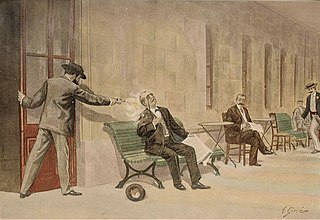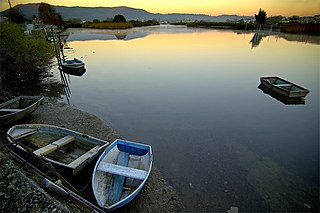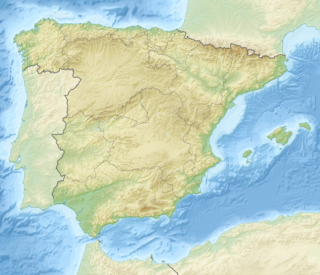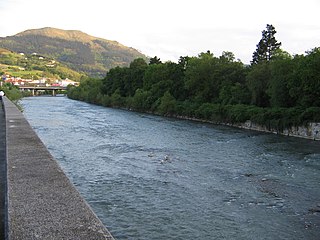 W
WGipuzkoa is a province of Spain and a historical territory of the autonomous community of the Basque Country. Its capital city is Donostia-San Sebastián. Gipuzkoa shares borders with the French department of Pyrénées-Atlantiques at the northeast, with the province and autonomous community of Navarre at east, Biscay at west, Álava at southwest and the Bay of Biscay to its north. It is located at the easternmost extreme of the Cantabric Sea, in the Bay of Biscay. It has 66 kilometres of coast land.
 W
WAdarra is a mountain south of the city of San Sebastian in the Basque Country. It is a popular peak with the local residents. The mountain is flanked on the north by the minor summits of Oindi or Onddi and Onddo to the south, all of them located at the top of a long mountain range of modest height between the Urumea and Leitzaran valleys, which extends south right to the edge of the Navarrese town of Leitza.
 W
WAiako Harria in Basque or Peñas de Aya in Spanish, is a massif east of the town of Oiartzun in the Basque Country. The river Oiartzun rises on its north-western face.
 W
WAizkorri or Aitzgorri is a massif, the highest one of the Basque Autonomous Community (Spain) with 1,551 m AMSL at its highest point. The massif is formed by a crest of limestone summits aligned north-west to south-east all in a row at the south of the province of Gipuzkoa, namely Artzanburu, Andreaitz, Arbelaitz (1,513 m), Iraule (1,511 m), Aitxuri, Aketegi (1,549 m) and Aizkorri (1,528 m). Despite its slightly lower height, this summit is the most popular one. The Aizkorri massif is one of the most conspicuous geological formations on the Basque Mountains range.
 W
WItalian anarchist Michele Angiolillo assassinated the Spanish Prime Minister Antonio Cánovas del Castillo on August 8, 1987, in Guipúzcoa. The head of state had been vacationing in the Santa Águeda spa. The assassin was immediately arrested, tried, and executed. He justified the murder as revenge for torture during the Montjuic trial.
 W
WThe Battle of Irún was the critical battle of the Campaign of Gipuzkoa prior to the War in the North, during the Spanish Civil War. The Nationalist Army, under Alfonso Beorlegui, captured the city of Irún cutting off the northern provinces of Gipuzkoa, Biscay, Santander, and Asturias from their source of arms and support in France.
 W
WThe Bay of Txingudi is a bay in the right or French bank of the estuary of the Bidasoa river, near Hendaye in the département of Pyrénées-Atlantiques in south-west France. It faces the town of Hondarribia and the airport of San Sebastián in the Gipuzkoa province of the Basque Country, in north-eastern Spain. The border between the two countries passes through the Bidasoa estuary. It is an important area for bird-watching.
 W
WThe Baztan is a river in northern Spain. It is a tributary of the Bidasoa river.
 W
WThe Bidasoa is a river in the Basque Country of northern Spain and southern France that runs largely south to north. Named as such downstream of the small town of Oronoz-Mugairi in the province of Navarra, the river actually results from the merger of several streams near the village Erratzu, with the stream Baztan that rises at the north-eastern side of the mount Autza being considered the source of the Bidasoa. It joins the Cantabrian Sea between the towns of Hendaye and Hondarribia.
 W
WThe campaign of Gipuzkoa was part of the Spanish Civil War, where the Nationalist Army conquered the northern province of Gipuzkoa, held by the Republic.
 W
WThe Cape Higuer is a cape on the Bay of Biscay standing out at the end of the mountain range Jaizkibel by the France–Spain border in the municipality of Hondarribia. The site is home to a lighthouse, besides holding a camp-site and a couple of inns. It is sometimes considered the westernmost land strip of the Pyrenees, with the trek trail GR 11 setting out at this point.
 W
WThe Cape Higuer Lighthouse is a lighthouse at the Cabo Higuer on the Spanish Atlantic coast in the Bay of Biscay. It lies in the municipality of Hondarribia, west of the mouth of the Bidasoa, which forms the border with France. It is the easternmost lighthouse on the Spanish Atlantic coast.
 W
WThe Deba River is a river in the Basque Country, Spain. It rises in Arlaban, into Araba province lands, and flows into the Atlantic Ocean, in the Bay of Biscay, in Deba Gipuzkoa province.
 W
WThe General Assembly of Gipuzkoa is the regional unicameral parliament of the Basque province of Gipuzkoa. Members are elected by universal suffrage for a term of 4 years. Last elections were held in 2015.
 W
WGipuzkoa is one of the three constituencies represented in the Basque Parliament, the regional legislature of the Basque Autonomous Community. The constituency currently elects 25 deputies. Its boundaries correspond to those of the Spanish province of Gipuzkoa. The electoral system uses the D'Hondt method and a closed-list proportional representation, with a minimum threshold of three percent.
 W
WGipuzkoa is one of the 52 constituencies represented in the Congress of Deputies, the lower chamber of the Spanish parliament, the Cortes Generales. The constituency currently elects six deputies. Its boundaries correspond to those of the Spanish province of Gipuzkoa. The electoral system uses the D'Hondt method and a closed-list proportional representation, with a minimum threshold of three percent.
 W
WGipuzkoa is one of the 59 constituencies represented in the Senate of Spain, the upper chamber of the Spanish parliament, the Cortes Generales. The constituency elects four senators. Its boundaries correspond to those of the Spanish province of Gipuzkoa. The electoral system uses an open list partial block voting, with electors voting for individual candidates instead of parties. Electors can vote for up to three candidates.
 W
WGipuzkoan is a dialect of the Basque language spoken mainly in the province of Gipuzkoa in Basque Country but also in a small part of Navarre. It is a central dialect, spoken in the central and eastern part of Gipuzkoa. In the traditional dialectal classification of the language based on research carried out by Lucien Bonaparte in the 19th century, the varieties of the valleys Sakana and Burunda are also included in Gipuzkoan, while this approach has been disputed by modern Basque linguists.
 W
WHernio is an iconic summit in the Basque Country very popular with the Gipuzkoans and located right at the heart of the province. The peak is the highest point of a massif extending north-west to south-east, the summit rising by the pass of Zelatun. Neighbouring summits lined up NW to SE at the range are mount Gazume standing west across the summit and mount Herniozabal closing the range east at the rear. The villages lying at the feet of the mount are Errezil (SW), Alkiza (NE) and Asteasu (N). The summit of Hernio affords to the NW a beautiful view over Azpeitia and the stone bulk of Izarraitz towering over the town.
 W
WIgeldo is a quarter of San Sebastian. It is almost a small town located at the mountain range of the same name towering over the west side of the Bay of La Concha. At the nearest point of the bay lies a permanent fairground at the hillock Mendiotz, topped by a conspicuous mock military tower which houses a hotel. There is a frequented camp-site on the area.
 W
WJaizkibel is a mountain range of the Basque Country located east of Pasaia, north of Lezo and west of Hondarribia, in Spain, with 547 m (1,795 ft) at the highest point. The range stretches south-west to north-east, where it plunges into the sea at the Cape Higuer. To the north-west, the mountain dips its slopes in the sea with beautiful cliffs all along, overlooking on the east the marshes of Txingudi, the river Bidasoa and its mouth as well as the towns of Irun, Hendaia and Hondarribia on the river banks. The nearest relevant mountains are La Rhune, Aiako Harria and Ulia, closing the view east to west from the south. Some people consider Jaizkibel to be the first westernmost mountain of the Pyrenees.
 W
WThe Leitzaran is a river and a valley in the Navarre and the Basque Country (Spain). It flows into the river Oria from its right.
 W
WGipuzkoa is a province in northern Spain, in the northeastern part of the autonomous community of the Basque Country. It is divided into nine regions:Bidasoa Debabarrena Debagoiena Donostialdea Goierri Oarsoaldea Tolosaldea Urola Garaia Urola Kosta Urola Erdia
 W
WMount Ulia is a minor ridge located east of San Sebastián in the Basque Country, territory of Spain, reaching 243 m at its highest point. The ridge stretching out to the east along the coastline sinks in the strait leading to the Bay of Pasaia. The chain overlooks San Sebastian to the west, with the Zurriola beach and the district of Gros lying right at the foot. This privileged location turned the place into an important leisure and romantic area in the early 20th century, a condition that has remained up to date, despite the pressure of increasing urban development.
 W
WThe Oiartzun River is a short river in the Basque Country in the north of the Iberian Peninsula. It is the smallest river of Gipuzkoa flowing into the Bay of Biscay ; the river joins the sea at the Bay of Pasaia. The Oiartzun rises in the Aiako Harria massif at an altitude higher than 700 m. It flows down through steep slopes and falls, with an average drop to its mouth of 5.49%.
 W
WThe Oria [ˈoɾja] is a river in the Basque Country at the north of the Iberian Peninsula. It's one of a series of Basque rivers flowing into the Bay of Biscay and the main river of the province Gipuzkoa in volume, length (75 km) and basin (882.5 km2), the main feature of these rivers aligned south to north being their shortness. The maximum elevation at the source is 1,260 m, while at its lowest height the tidal influence extends inland up to Usurbil (estuary). On this final stretch, many marsh and wetland strips dotted the banks of the Oria, although some of them have been drained for agricultural and building purposes.
 W
WPagoeta Nature Reserve is located near the town of Aia in the Basque Province of Gipuzkoa, Spain.
 W
WThe San Adrian tunnel or Lizarrate represents the most outstanding milestone in the historic inland Basque route of the Way of St. James. It consists of a natural cave carved by water erosion in the rock with an opening on either side north and south; it also holds an hermitage inside. The tunnel provides a natural passage dividing the provinces of Gipuzkoa and Álava/Araba.
 W
WTxindoki or Larrunarri is an iconic mountain located in the region of Goierri, Gipuzkoa, in the Basque Autonomous Community of Spain. Originally Larrunarri or Ñañarri, the mount took on the popularized name Txindoki by extension after some shepherd huts nearby. It is sometimes referred to as the Basque Matterhorn too, because of its pyramidal shape.
 W
WUrgull is a hill by the ocean sitting at the heart of the Basque city of San Sebastián, Gipuzkoa, Spain. The hill shapes along with Mount Ulia and Igeldo the city's coastline relief, standing at the northern end of a peninsula formerly linked to mainland by a spit of sand between the river Urumea and the Bay of La Concha.
 W
WThe Urola is a river and valley in Gipuzkoa, Basque Autonomous Community, Spain.
 W
WThe Urumea is a river in the Basque Country at the north of the Iberian Peninsula. It's one of a series of Basque rivers flowing into the Bay of Biscay and is best known for being the river flowing towards the sea by the city of San Sebastian.